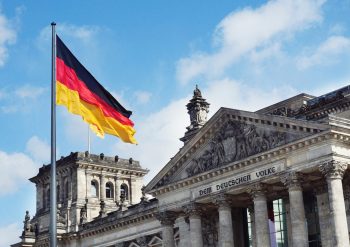Introduction
As global trade dynamics evolve, German startups are increasingly turning to China to source cost-effective, high-quality products while building resilient supply chains for the EU market. However, navigating cross-border procurement, compliance, and logistics requires a strategic approach. This guide explores how German entrepreneurs can leverage China’s manufacturing prowess while mitigating risks and ensuring seamless operations.
1. Why China Remains a Strategic Sourcing Hub
- Cost Efficiency: China’s economies of scale offer competitive pricing for raw materials, components, and finished goods.
- Manufacturing Expertise: From electronics to textiles, China’s specialized industrial clusters provide unmatched production capabilities.
- Speed to Market: Agile manufacturing ecosystems enable rapid prototyping and bulk production, critical for startups scaling quickly.
2. Key Steps to Source Reliable Suppliers in China
a. Identify Verified Partners
- Use platforms like Alibaba Global (filter for Gold Suppliers) or Global Sources to shortlist vendors with certifications (ISO, BSCI).
- Attend trade shows like the Canton Fair or China Import and Export Fair to build face-to-face relationships.
b. Conduct Due Diligence
- Request factory audits (onsite or third-party) to assess production capacity and working conditions.
- Validate supplier credibility via tools like Dun & Bradstreet or China’s National Enterprise Credit Information System.
c. Negotiate Smart Contracts
- Clarify Incoterms (e.g., FOB, EXW) to allocate logistics responsibilities.
- Include penalties for delays and quality defects in contracts.
3. Ensuring Quality Control & Compliance
- Pre-Shipment Inspections: Partner with agencies like SGS or TÜV Rheinland to inspect goods before shipment.
- EU Compliance: Ensure products meet regulations like CE Marking, REACH (chemicals), and GDPR (data privacy for smart devices).
- Sustainable Sourcing: Align with EU Green Deal standards by sourcing eco-friendly materials and auditing suppliers’ ESG practices.
4. Building a Risk-Resilient Supply Chain
- Diversify Suppliers: Avoid over-reliance on one region; consider backup suppliers in Eastern China and emerging hubs like Vietnam.
- Optimize Logistics: Work with freight forwarders experienced in EU-China routes. Leverage rail freight (China-Europe Railway Express) for faster transit than sea and lower costs than air.
- Leverage Technology: Use IoT trackers and ERP systems (e.g., SAP) for real-time inventory and shipment visibility.
5. Case Study: Berlin-Based EcoTech Startup
A German clean energy startup sourced solar panel components from Shenzhen, China. By partnering with a Tier-1 manufacturer, conducting quarterly QC audits, and using blockchain for supply chain transparency, they reduced lead times by 30% and achieved ISO 14001 certification. Their products now meet EU Eco-Design Directive standards, gaining a competitive edge.
6. Navigating Cultural & Communication Barriers
- Language: Hire bilingual agents or use translation tools to avoid misunderstandings.
- Relationship Building: Regular video calls and factory visits foster trust with Chinese partners.
- Time Zones: Overlap working hours for urgent queries (e.g., 8–10 AM CET aligns with 3–5 PM China time).
Conclusion
For German startups, China offers unparalleled opportunities to build cost-efficient, scalable supply chains. By prioritizing supplier verification, compliance, and risk mitigation, entrepreneurs can secure a competitive advantage in the EU market. Embrace digital tools, sustainability, and strategic partnerships to future-proof your operations.
Need help optimizing your China-EU supply chain? Contact our experts for a free consultation.

